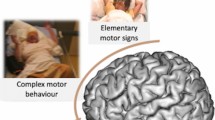Abstract.
Results regarding the anticonvulsant potency of bromide have been questioned, and the mechanisms of its action are unclear. Using combined rat hippocampus-entorhinal cortex slices we analyzed the effects of NaBr on four types of epileptiform discharges in two different models of epilepsy, the low-Ca2+ and the low-Mg2+ model. NaBr concentration-dependently reduced the frequency and finally blocked the low Ca2+-induced discharges. Low Mg2+-induced short recurrent discharges were also reduced in a concentration-dependent manner. In the entorhinal cortex the frequency of seizure-like events was reduced by 3 and 5 mM and the discharges were blocked by 7 mM NaBr. Also, the late recurrent discharges in the entorhinal cortex which do not respond to most clinically employed anticonvulsants were reduced by concentrations of 10 and 15 mM and completely blocked by 30 mM NaBr.
Using pH-sensitive microelectrodes different effects of NaBr were seen than those of acetazolamide on extracellular pH under control conditions and after stimulation. Acetazolamide at 1 mM caused a reversible acidification of ΔpH: 0.2±0.14 at rest whereas no change on extracellular pH was seen with 5 mM NaBr. Acetazolamide increased the transient alkalosis induced by repetitive stimulation of the stratum radiatum in area CA1 and reduced the subsequent acidosis. NaBr also increased the alkalosis but had no effect on the subsequent acidosis.
A significant increase in paired-pulse inhibition was seen in a paired-pulse stimulation protocol used to monitor the efficacy of GABAergic inhibition at concentrations of 5 mM NaBr. This finding was confirmed in whole-cell patch clamp recordings from cultured hippocampal neurons showing an increase in inhibitory postsynaptic current amplitude.
In summary, our results suggest a broad-spectrum anticonvulsant activity which is likely to be caused by its effects on membrane excitability, by an increase in GABAergic inhibition and is less likely caused by its effects on extracellular pH.
Similar content being viewed by others
Author information
Authors and Affiliations
Additional information
Electronic Publication
Rights and permissions
About this article
Cite this article
Meierkord, H., Grünig, F., Gutschmidt, U. et al. Sodium bromide: effects on different patterns of epileptiform activity, extracellular pH changes and GABAergic inhibition. Naunyn-Schmiedeberg's Arch Pharmacol 361, 25–32 (2000). https://doi.org/10.1007/s002109900162
Received:
Accepted:
Issue Date:
DOI: https://doi.org/10.1007/s002109900162




